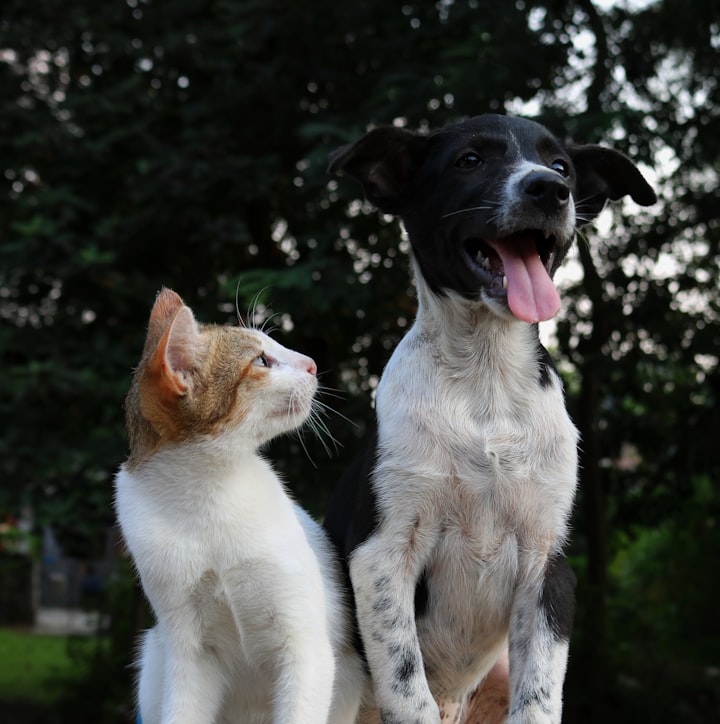Your Dog Will Teach You How To Meditate: Mindfulness Lessons From Animals
How our pets can become the best teachers—if we are willing to learn.

Mindfulness practices teach us to be in the here and now, notice what we are feeling, and bring more awareness into what we are doing. They work to relax the body and mind and reduce stress levels. Most often these are exercises with a concentration on breathing; meditations while standing, sitting, or in motion, which can be combined with other activities such as yoga, sports, or everyday activities.
There are now more and more educational programs and materials about meditation. How about learning mindfulness from those who know how to do it from birth and do not lose this skill throughout their lives?
Our pets can become such teachers for us. No wonder it was during the quarantine that many decided to have a long-desired dog, cat or other living creature. Indeed, in moments of emotional stress and uncertainty, animals help reduce feelings of loneliness and can positively affect our mental health.
What can pets teach us?
1. To live “here and now”.
For example, cats are true Zen masters. If you’ve watched them, you’ve probably noticed their remarkable ability to just be here and now. Animals do not worry about anything at all, except for what is happening at a particular moment.
And they don’t care about our plans. They have a habit of interrupting our flow of thoughts, which we consider to be very important. And although it may be annoying at first, in fact, thanks to the activity of animals, we can break away from the constant scrolling of thoughts and return to reality.
When we start playing with our favorites, stroking or hugging them, we experience the same sense of presence that is so necessary for the practice of mindfulness.
2. Reduce stress levels.
Regular companionship with pets can improve quality of life by reducing stress and relieving depression in some people. Simply making contact with your dog can increase levels of oxytocin, a hormone of affection and affection. Stroking and hugging release a positive mood neurotransmitter called serotonin, while simultaneously lowering the stress hormone cortisol and normalizing blood pressure.
3. Improve relationships with other people.
Observing animal behavior and attunement to their emotional state can help establish closer relationships with family, friends, and colleagues. Through the mindfulness and empathy that you develop by caring for your pet, you increase your ability to be more mindful in your day-to-day interactions with your environment.
4. More being in nature.
If you want to improve your mental health and master mindfulness, it is important to shorten the time you interact with your gadgets. Pets, especially dogs, encourage us to go outside and focus on nature.
If you regularly walk with your dog, you begin to pay more attention to, for example, the rustling of leaves, the sound of the wind or raindrops, the freshness of the frosty air — all these moments help you develop mindfulness skills and relax.
5. Meditate.
Mindfulness practices involve a relaxed posture and focus on your breathing: inhaling and exhaling slowly. At the same time, you notice any random sounds, smells, sensations, or tastes and just let them happen at the moment. You can improve your mindfulness practice by focusing directly on your pet at a specific point in time during meditation.
How to meditate with an animal?
Focus only on your pet. See how his belly moves as he breathes. Touch the animal, look at it as if you are seeing it for the first time, feel how soft its fur or feathers are under your fingers. Pay attention to the smallest features of your pet’s face: mustache, eyelashes, and small specks, which give your pet a unique appearance. If the animal is pressed against you, pay attention to how its heartbeat feels, be aware of your own.
6. Structure our daily life.
Pets provide us with a certain structure of life. They know when to walk and when to have time. At certain times of the day, a dog or cat distracts us from business, reminding us that it’s time to feed them and play with them.
7. Be active.
Running or walking the dog is a great form of much-needed physical activity. Plus, our pet’s morning vigor can inspire us to get up early and go outside. And what, if not the desire to move, improves mood and promotes concentration?
8. Be more playful.
All mammals share play as a form of communication and a way to take care of themselves. Just like with each other, pets love to play with their owners. During long working days, a dog throwing a ball at your feet, or a cat bringing toys to you, provide a little fun and relaxation. It is in the game that we are, more than ever, captured by the current moment.
9. Do not be afraid of loneliness.
Your dog recognizes the slightest change in your face, notices your posture and your tone of voice, knows your normal breathing and heart rate — and can use this information to respond quickly to your emotional state.
This deep connection with our pets relieves feelings of loneliness and enhances a sense of well-being. Playing and petting with furry friends improves our mental health in the short term and can also affect our mood in the long term.
10. Increase your circle of acquaintances.
Having a four-legged friend nearby helps to “build bridges” with other people very quickly — such interaction is more important than ever in these times of social distance.
Pets can also deepen relationships within your own family. In particular, children who feel an emotional connection with their dogs develop a more secure attachment to their parents. Spending time with your partner or children around your pet helps you stay relaxed. In the end, you begin to associate this positive feeling with family time, building deeper bonds with loved ones.
Perhaps we have not remembered everything, and you can add something based on your own experience. Animals are really great mindfulness teachers, as long as you take the time to notice and enrich your mindfulness arsenal.
About the Creator
Michail Bukin
Creative Writing Expert and Ambitious Stutterer







Comments
There are no comments for this story
Be the first to respond and start the conversation.